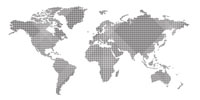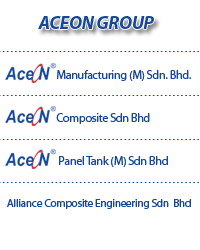|
|
FRP or GRP Cable Ladder/Tray – What is FRP Cable Tray and LadderFRP and GRP are the same material, only known with different names depending on country. For example they are known as GRP (Glass Reinforced Plastic) in Britain while they call it FRP (Fiber Reinforced Plastic) in the States. FRP Cable Tray has been used for a wide range of applications among different industries. Just to name a few, you can find them utilized in tanks, cable trays, tennis rackets, automobile etc. They are so commonly used for good reasons; they have amazing weight to strength ratio, rust and chemical resistance, strong mold-ability and more. They are especially widely used during World War 2 by the Germans, in replacing windows for jet planes and tanks. FRP Composites FRP Composites are often misunderstood, because not all plastics are composites. In fact, the majority of plastic manufacturing is pure plastic, mainly used in plastic bottles, toys and chairs. When additional strength is needed especially for industrial usages, plastics are reinforced with different materials for example fiber. This combination of plastic and reinforcement can produce some of the strongest yet light materials. This is one of the most versatile solutions with superior technology. Therefore, the definition of fiber can be understood by “Polymer matrix is a reinforced agent as glass, carbon, fillers, additives and other materials”. High Strength and Stiffness Retention – FRP Composites are designed to provide a wide range mechanical properties. These include tensile, flexural, impact and compressive strengths. Unlike other traditional materials, they have strengths oriented to meet stringent conditions of different applications. Light Weight/ Parts Consolidation – FRP Composite materials deliver more strength/unit than all different metals. They have easily molded into different parts, complex parts. Therefore, they are widely used in assembly parts and fasteners. This combination of these 2 combinations makes them the perfect material for powerful material system structures can be partially or completely pre-fabricated at the manufacturer’s facility. Harsh Condition Resistance – FRP material has display excellent resistance to the corrosive effects like weather and UV resistant. FRP composite structures are designed and treated with a surface layer that contains pigmented gel coat or an UV inhibitor as an additive. Both of these methods provide extreme protection. Chemicals and Temperature – FRP Composites do not rust or corrode, formulated to offer long term resistance to nearly all chemicals and harsh temperature environment. Due to this benefit, FRP composite is widely used at shore plants because it withstands destructive effects from sea water. Fire Performance of FRP Composites – FRP composites are specifically designed to meet the most stringent fire regulations among different industries. This is achieved by the use of special resins and additives. Properly designed and formulated FRP composites can offer fire performance approaching that of most metals. |
Contact address: Indonesia Address:
|
|||||||||||||||||||||||||||||||||||||
| FRP Panel Tank Division FRP Panel Tank |
FRP Pultrusion Division FRP Grating FRP Cable Ladder/Tray FRP Structural Profiles FRP Handrail/Caged Ladder |
FRP Contact Molding & Filament Winding Division FRP Scrubbers and Ductings FRP Tanks FRP Pipes & Fittings FRP Centrifugal Fans FRP Composite Door FRP Lining and Coating FRP Custom Made Products |
||||||||||||||||||||||||||||||||||||
| Copyright © 2015 |
Powered by SEO Malaysia | Online Marketing | Mobile Friendly Web Design | Simple Internet Communications Sdn Bhd |


